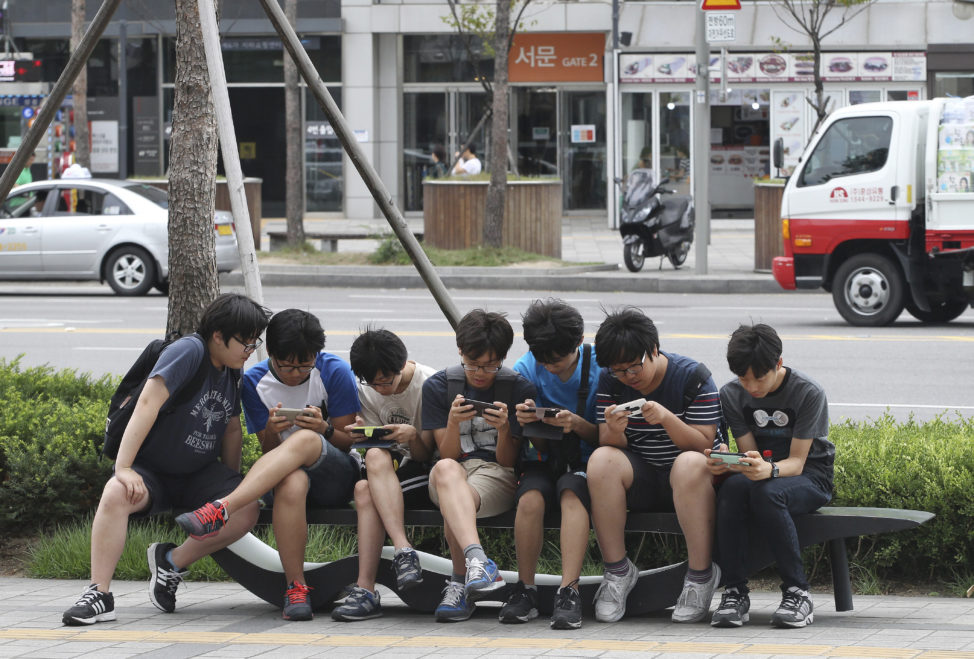Snippets of text, emojis, likes and dislikes are upending social interaction. While offering immediacy and convenience, they are taking away face-to-face body language and nonverbal cues, crucial for human communication.
Technology is changing the way we communicate, “dramatically” shifting the way people relate to each other to channels like social media – a “2-dimensional medium which eliminates all of the non-verbal communication,” said psychologist Joti Samra, Clinical Director and Co-founder of Canada’s Boreal Wellness Centers.
“We are now increasingly, given technological changes, communicating in ways that are dramatically different from how we used to, e.g., communicating in 140-character snippets, communicating in such a way to garner ‘likes’ and ‘followers,’ communicating through pictures,” she said in an email. “And this has fundamentally impacted social [relations].”
Mobile devices put the world at our fingertips, making it easier perhaps to text someone, oceans away, who is “always on,” or post a social media comment. But this form of interaction doesn’t exactly qualify as “normal behavior” for creatures who are social by nature and who thrive on social interaction.
“Changes in the way we relate to each other matter tremendously,” she said. People need to “talk/process/convey through bidirectional communication and nonverbal [cues].”
And while some of that interaction relies on verbal communication, “nonverbal communication [tone, demeanor, eye contact, volume, etc.], is even a more important determinant of the way we communicate and our communication messaging,” she added.
Was that person being rude? It’s hard to tell on chat or in a text message. Only in face-to-face interaction can you look deep into a person’s eyes or sense their vibes – warmth, unease, trepidation, rudeness.
This is particularly true of teenagers and younger people, noted Samra. Growing up in a tech world, they learned to “communicate differently” in many ways, so that “the emphasis/value on in-person interpersonal connecting has been lessened.”
Ironically, the technology evolution that now gives people many different ways to interact with each other as they become more accessible or “always on,” also builds barriers between them, said Maci Peterson, co-founder of @OnSecondThought app, which lets users take back messages they sent in error.

FILE – South Korean high school students play games on their smartphones on a bench on the sidewalk in Seoul, South Korea. (AP)
“We are all on our devices at times when we should be engaging and interacting with other people or just paying attention to our surrounding,” she said. “And so whether you are at dinner and constantly pulling out our phone or walking down a street … you’re not engaging the people around you or not responding to them.”
She told Techtonics she does it too – frequently, even though it is considered rude behavior. “It is telling the people you are supposed to be spending time with that “whatever is happening on my phone is more important.”
Is technology to blame for this behavior? Peterson argued that there has always been something that “allowed us to build a barrier between us and those around us. Today that just happens to be technology.”
But the potential for misunderstandings is greater with digital forms of communication. “The demand characteristics are more likely to elicit perceptions of rudeness [by taking out the nonverbal element of communication],” said Samra.
“The anonymity or perceived anonymity of tech communication/social media also is more likely to allow those who are ALREADY rude/disrespectful to have more of a ‘free reign’ on how they communicate,” she added.
“It’s not necessarily that it is an enabler or that it makes me more rude,” said Peterson, in defense of technology. but that it fills a void.
With one small device, “I can access the entire world,” she said. Can face-to-face communication do that?


4 responses to “‘OMG!’ How Technology Is Changing Personal Interaction”
They will only limit their excess on their smartphones to study practical metaphysics”
kk
“With one small device, “I can access the entire world,” she said. Can face-to-face communication do that?” Well, what, exactly, is the point in contacting with the entire world if you can’t interact effectively with the world? Accessing the entire world just to sprinkle your non-versations with emojis, OMGs, LOLs, etc., is NOT communicating and it certainly is no substitute for learning something from other cultures that inhabit that world you so happily want to access.
[…] To view at source, click here. […]